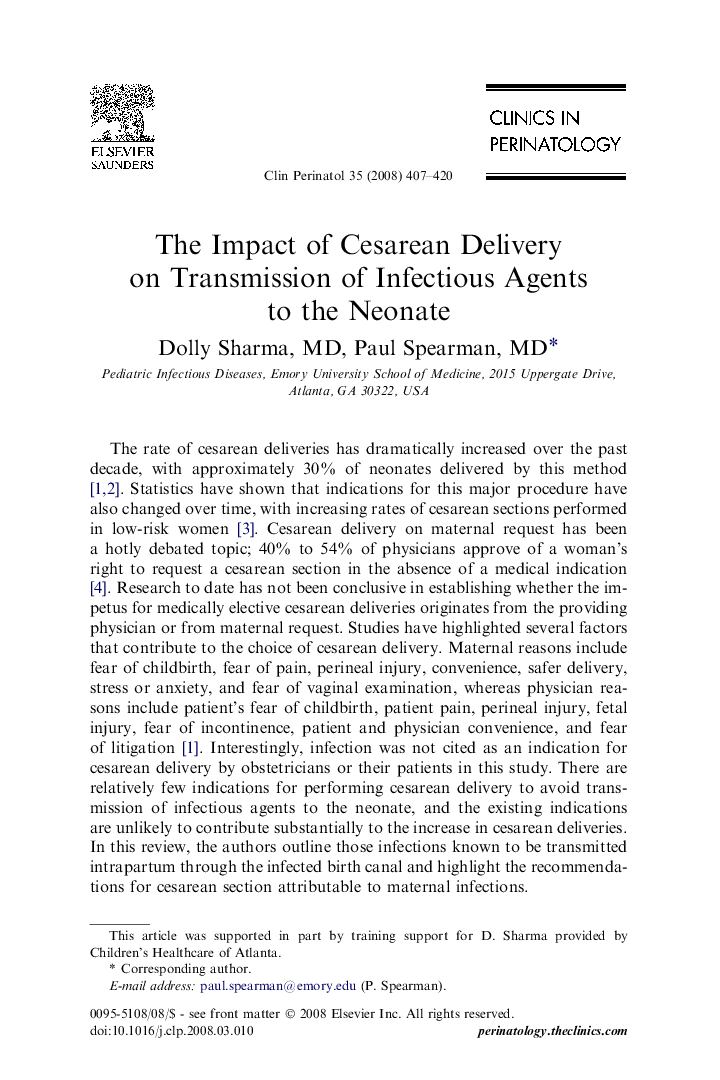| کد مقاله | کد نشریه | سال انتشار | مقاله انگلیسی | نسخه تمام متن |
|---|---|---|---|---|
| 4151974 | 1273030 | 2008 | 14 صفحه PDF | دانلود رایگان |
عنوان انگلیسی مقاله ISI
The Impact of Cesarean Delivery on Transmission of Infectious Agents to the Neonate
دانلود مقاله + سفارش ترجمه
دانلود مقاله ISI انگلیسی
رایگان برای ایرانیان
موضوعات مرتبط
علوم پزشکی و سلامت
پزشکی و دندانپزشکی
پریناتولوژی (پزشکی مادر و جنین)، طب اطفال و بهداشت کودک
پیش نمایش صفحه اول مقاله

چکیده انگلیسی
The rate of cesarean deliveries has increased dramatically over the past decade. Studies to date have highlighted a number of factors on the part of the treating physician and the expectant mother contributing to this increase. Maternal infections are not a major cause of this increase. There are a limited number of infections in a pregnant woman that warrant cesarean delivery to prevent perinatal transmission. This article outlines those infections known to be transmitted perinatally through the infected birth canal and details the current recommendations for cesarean delivery. Pregnant women with active genital herpes lesions or with known herpes simplex virus infection and a prodromal illness consistent with recurrence at the time of presentation in labor should undergo cesarean delivery. Pregnant women who are HIV infected and have detectable viremia (>1000 copies/mL) should be counseled regarding the potential benefits of cesarean delivery as an adjunct to antiretroviral therapy. Hepatitis C virus (HCV) can be transmitted intrapartum, but prevention of HCV transmission by cesarean delivery has not been proved effective and is not generally indicated. A limited number of other infectious agents can be transmitted through the birth canal but do not constitute an indication for cesarean delivery.
ناشر
Database: Elsevier - ScienceDirect (ساینس دایرکت)
Journal: Clinics in Perinatology - Volume 35, Issue 2, June 2008, Pages 407-420
Journal: Clinics in Perinatology - Volume 35, Issue 2, June 2008, Pages 407-420
نویسندگان
Dolly MD, Paul MD,